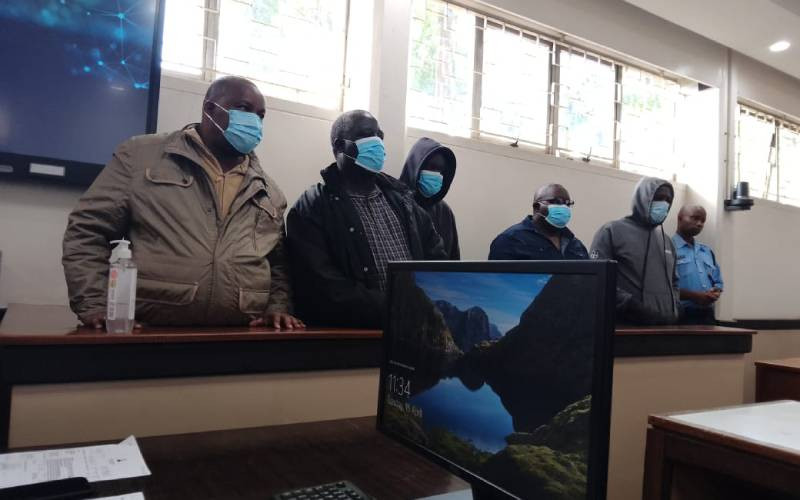By WACHIRA KIGOTHO
Corruption in education has greatly compromised the link between quality education, employment opportunities and the reduction of low-skill self-employment, an assessment by Transparency International has shown.
In Global Corruption Report: Education, published recently, TI ranks Kenya fifth among leading countries where people bribe for educational services. Globally, it is only Ghana, Cameroon, Nigeria and Turkey in that order that are ahead of Kenya in systemic corruption in education.
However, the public perception of corruption in Kenya stands at 37 per cent, which is about the global average.
But whereas most people regard corruption in education and in other areas as an aspect of under-development, especially in sub-Saharan Africa, Rwanda has proved corruption can be avoided in education. The perception of corruption in Rwanda stands at only four per cent, while the percentage of people who bribe for education is below one per cent.
The worst thing about corruption in education is that its main victims are the poor young people, according to Muriel Poisson, a programme specialist with the International Institute for Educational Planning at UNESCO.
Losses to corruption
“Unable to play by the rules that determine success or bear the financial cost of corruption, poor and marginalised groups find themselves cheated out of the promise of educational opportunity,” says Poisson.
For instance, the report highlights how misappropriation of funds meant for the Free Primary Education Programme in Kenya between 2004 and 2009 denied public primary schools more than 11.4 million textbooks. “Over Sh4.2 billion of donor funds meant to provide books and infrastructure was lost to corruption,” says the report.
It shows corruption in the education sector in Kenya occurs both at the service delivery level and in the diversion of funds before they even arrive at schools. In other instances, parents pay bribes for enrolment or good grades.
TI has also documented cases where teachers in primary schools coerce parents to pay for private tuition outside the school hours. There are also cases of use of school property for private commercial purposes as well as inflating pupil numbers so as to receive higher allocations of the free primary education funds. “Corruption at school and administrative levels is a pernicious issue in Kenya,” says the report.
However, in the absence of effective and controlled audit mechanisms, TI warns corruption might rise even beyond the current levels. The education sector is characteristically prone to corruption because of huge resources that are disbursed through complex administrative layers, inadequately monitored all the way from the National Treasury to schools.
Nonetheless, whereas most Kenyans know of the open corruption where people pay bribes for services rendered, few are aware of the hidden costs of corruption in education. Transparency International has identified teacher absenteeism as one of the most serious subtle forms of corruption in education and Kenya is at the head of the ranking index.
Whereas some teacher absences from school are legitimate, teachers cutting class in Kenya’s primary schools is worrying. Although Transparency International puts Kenya’s teacher absenteeism at 30 per cent, which is the highest in the world, a recent World Bank survey puts the figure at 45 per cent.
According to Harry Anthony Patrinos, the Education Sector Manager at the World Bank, an average of 16 per cent of teachers in Kenya are away from school each day, while 27 per cent will be in school but not teaching. “Still, two per cent would be in class but not teaching,” says Patrinos.
Stay informed. Subscribe to our newsletter
Regardless of the reason for missing class, the system of monitoring teachers seems to have failed the child as a result of engaging in corruption. But while there are several legitimate reasons for teachers missing class, World Bank researchers identify tardiness as the largest contributor to absenteeism and loss in schools.
 The Standard Group Plc is a
multi-media organization with investments in media platforms spanning newspaper
print operations, television, radio broadcasting, digital and online services. The
Standard Group is recognized as a leading multi-media house in Kenya with a key
influence in matters of national and international interest.
The Standard Group Plc is a
multi-media organization with investments in media platforms spanning newspaper
print operations, television, radio broadcasting, digital and online services. The
Standard Group is recognized as a leading multi-media house in Kenya with a key
influence in matters of national and international interest.
 The Standard Group Plc is a
multi-media organization with investments in media platforms spanning newspaper
print operations, television, radio broadcasting, digital and online services. The
Standard Group is recognized as a leading multi-media house in Kenya with a key
influence in matters of national and international interest.
The Standard Group Plc is a
multi-media organization with investments in media platforms spanning newspaper
print operations, television, radio broadcasting, digital and online services. The
Standard Group is recognized as a leading multi-media house in Kenya with a key
influence in matters of national and international interest.








